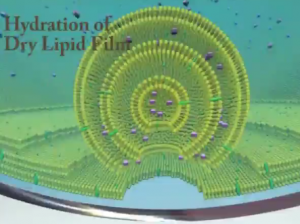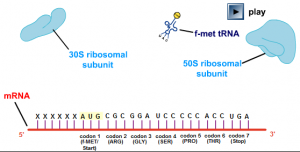A series of videos which talks about the Total Artificial Heart and the role it plays in therapy for patients waiting for heart transplant.
- Artificial Heart Videos Parts 1, 2 and 3
- Artificial Heart Videos Parts 4, 5 and 6
- Artificial Heart Videos Parts 7, 8 and 9 (current post)
- Artificial Heart Videos parts 10, 11 and 12
These videos have been provided to PharmaXChange.info by (Peter Crown, Ph.D, Virtual Clinic Research Center) MedicalIgnorance.org and the Summer Institute on Medical Ignorance, University of Arizona, College of Medicine.
7. How does the Total Artificial Heart connect to the body?
What you see here is a cuff. We call this the atrial cuff. So this is the inflow the device. So this cup would be sewn onto the atrium of the patient. Now that it is sewn on to the atrium blood can come in and when the blood comes out this can be connected to the aorta or to the pulmonary artery depending whether it’s the left side or the right side. So this is the continuation of the aorta so that the blood goes to the rest of the body.
8. Artificial Heart attachment to a Mock Loop
So now what we are going to do is we are going to connect it to the driving unit, Mock loop. So we have a total artificial heart connected to the Mock Loop which is designed to imitate the natural pressures of the body which we will talk about.
So the sound you are hearing now is the opening and the closing of the metal valves. As we talked about when we looked at blood flow in series, of the ins and the outs, and going into the valves and out of the valves, thats exactly what you are hearing here.
So what is the Mock loop? How does it work?
Again It does represent the pressures of the natural human body so that while we are in the laboratory we can create certain scenarios that we might see on a patient so that we can train and know how to facilitate those. So what are you looking at here with the mock loop is we will start with the Right Atrial pressure (RAP). The water level here gives us the pressure which is equal to the right atrial pressure that you would see in the human body. This reservoir then has an inflow that comes into the device, the device then pumps an outflow which goes out to the pulmonary artery (PAP), and this reservoir is at the pressure which is equivalent to the body. And you may not be able to see it, but this there is a small tube here which represents the lungs, so the pulmonary artery (PAP) to the lungs which then goes into the left atrium which is at a left atrial pressure which is a pressure similar to the body. That then again flows into the device (left), it pumps and then there is a outflow and that the outflow is the aorta (goes out) and again the pressure is similar. And then there is a tube that goes through that represents the body to the body back into the Right Atrial pressure (RAP) thus completing the loop that we are talking about.
9. How is ejection fraction controlled in the Total Artificial Heart?
The total artificial heart is designed to be fully eject and partially fill. So what we mean by that is that when the blood comes in we don’t want the device to fill completely but we do want that is that when it ejects it is fully ejecting. We will be discussing how we interface that with the computer to make sure that the device is functioning properly. Now to measure that, really what we are measuring is airflow. To show you that I will turn the device around and what you see here, these are the pneumatic drive lines or the airlines which when the console pumps air, the air travels through to the device providing the pumping. As it pumps, there is also a return of the air. Where does this air go? So we really have through these airlines is the shuffling of air, it pumps and there is a small vacuum here which pulls the air back. So we get the pumping and pulling effect. And what we are measuring is that air flow. So when it flows the computer is able to calculate the airflow going out and its also able to calculate the airflow that is coming back in and we will see what that looks like on the computer.
So this is the computer screen we are going to interface with and make sure the device is functioning properly. On the screen we are going to see some different values and il show you what these values are. What you are seeing here on the far right side in terms of number this is the left cardiac output and this is the right cardiac output. On average this device gives anywhere between 6-8 litres per min of flow and thats what you are seeing and this is changing per beat.
On the same note over here these are averages again monitoring the cardiac output. So instead of per beat this is more over time, and so far since we had the device on it is pumping with average 3.9 to 4.2. But again remember we started at zero so with time we have to get closer to these values of 6 litres per min. And the graph at the bottom is graphing that average over time which further allows us to access any changes in cardiac output on the patient over the time he is in the hospital. Here you are seeing is the fill volumes. Fill volumes is how much is the device filling. The device itself has 70 cc capacity (70 ml). So what we are seeing here is in the 50’s on the left and also in the 50’s on the right and also remember that we do not want the device to fill completely. So by looking at the numbers if at any time if it is fully filling or getting closer to 70 cc or 70ml which is telling us that the device is more filling and there are things we can do to change that so that it doesn’t. And then there is the heart rate and that is how fast is the device pumping and you notice here it is 120 beats per min. That’s really fast and we consider that on average the resting heart rate is 72 beats per min.
Why do we have to pump that fast and that is because of the design of the device. Remember the device is 70 cc capacity or 70ml and if we had a slower heart beat which we will illustrate, if we had a slower heart beat, it gives the device more time to fill with blood, and we don’t want it to fully fill, we want it to partially fill. So what we can do is increase the heart rate which is exactly what we have to do so these patients usually see a heart rate of about 120-130 beats per min so that it’s beating faster giving that device lesser time to fill with blood because we don’t want it to fully fill. So that’s why you see that heart rate.



